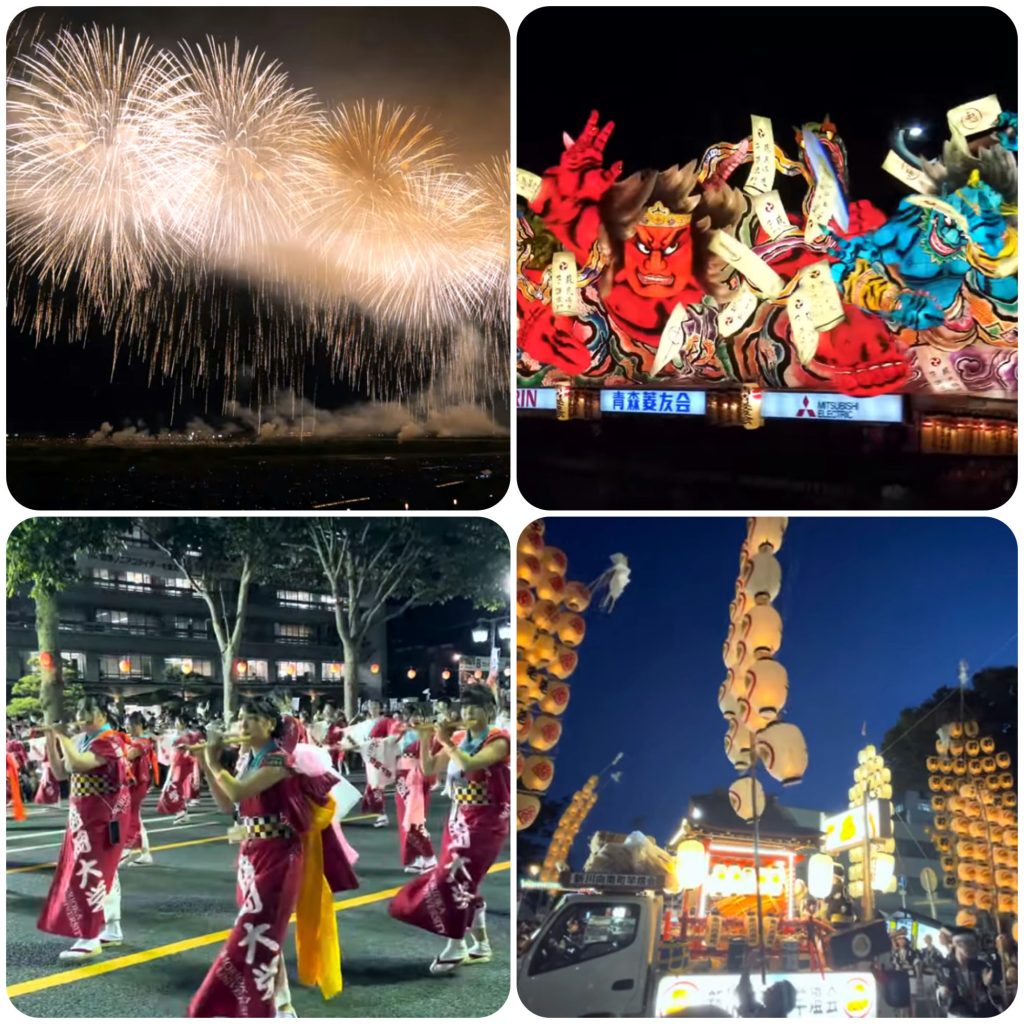
All across Japan, summer festivals and fireworks displays are in full swing. Yesterday (8/3), I watched the live coverage of various events on Youtube, including the Nebuta Festival in Aomori City, the Sansa Festival in Morioka City, the Kanto Festival in Akita City, and the fireworks display in Nagaoka City. While I had seen some of these events on TV news, it’s the modern era that allows us to watch the festivities and fireworks for an extended period like this. In the past, the HUT (the percentage of people watching TV) used to exceed 70% during prime time, but in recent data, it has dropped to 52.0%, with some fluctuations, but overall, it continues to decline. It’s somewhat surprising that it’s still maintaining around 50%. This is also a sign of the aging society, as the generation that watches TV tends to be older, and the younger generation watches less TV. There’s a trend of people moving away from television, newspapers, and books, indicating significant changes in the era.
日本全国、夏祭りと花火大会が真っ盛りです。昨日(8/3)は、青森市のねぶた祭り、盛岡市のさんさ祭り、秋田市の竿燈祭り、そして長岡市の花火大会の模様をYoutubeのライブで見ました。テレビのニュースでは見ましたが、こうして長時間にわたってお祭りや花火大会の様子を見られるのは今の時代だからこそです。かつてはゴールデンタイムで70%を超えていたHUT(テレビをつけている世代の割合)も、直近データでは52.0%にまで落ち込んでいて、多少の上下はありますが、全体的には下降の一途をたどっています。むしろ、まだ50%前後をキープしているのが不思議なくらいです。これも社会の老齢化が進んでいる証の一つで、テレビを見る世代が中高年に偏っているからです。若い世代ほどテレビを見ない。テレビ離れ、新聞離れ、本離れ、時代は大きく変わってきています。
